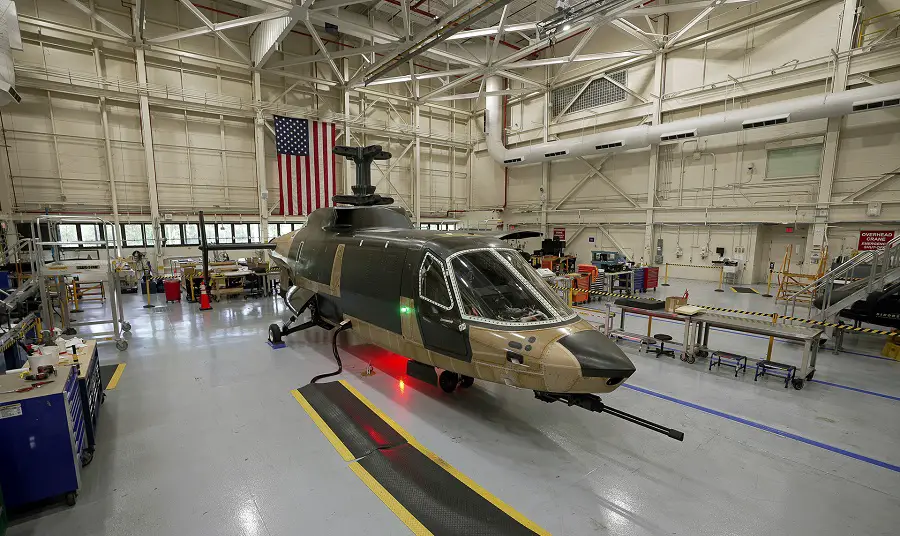Florida is known for its sunny skies and hot temperatures, but nothing brings the heat like the S-97 RAIDER® at the Sikorsky Development Flight Center where the advanced helicopter regularly zips, dips, dives and pirouettes, reaching speeds of 205+ knots. A traditional helicopter just can’t keep up. As an 80 percent-scale prototype of the RAIDER X® design, the S-97 RAIDER flight test program informs design decisions, correlates to a virtual prototype and enables Sikorsky, a Lockheed Martin company, to experiment with the unique capabilities that X2™ technology provides. The S-97 RAIDER is the technology demonstrator for RAIDER X®, Sikorsky’s Future Attack Reconnaissance Aircraft (FARA) offering, to revolutionize the U.S. Army’s fleet. The team designing RAIDER X gathers data and lessons from every S-97 RAIDER flight. Future aviators will rely on RAIDER X to be a fast, agile, survivable compound coaxial helicopter to address evolving threats in the most difficult environments.
The RAIDER X Competitive Prototype (CP) aircraft is making progress thanks to Sikorsky’s digital factory and other advanced techniques. With the RAIDER X CP, 3D printing allowed the team to reduce risk and fabricate and validate parts in weeks to months, as opposed to what would historically take months to years. The Sikorsky team also built a second RAIDER X fuselage, which is being integrated into the team’s structural test program and will be used to validate the flight and ground loads capability of the airframe. It’s tests like these that support Sikorsky’s flight safety program, providing data to optimize and accelerate the design, resulting in more flexibility and greater risk reduction. RAIDER X also features a Modular Open System Approach (MOSA) for avionics and mission systems, offering “plug-and-play” options for computing, sensors, survivability and weapons. This enables a broader range of aircraft configurations for specific mission requirements.

“We have a mature capability across Lockheed Martin and our suppliers to incorporate many more additively manufactured components on the RAIDER X CP aircraft,” said FARA Chief Engineer Pete Germanowski. “The rapid maturation of this technology across the Lockheed Martin enterprise and our supply base, for both metal and composite materials, enables schedule, cost and weight savings across our systems.”
“With established high-tech manufacturing facilities, a flying prototype in the S-97 RAIDER and existing digital thread and virtual models, the RAIDER X will offer the operational flexibility the Army needs including speed where it matters, a large multi-functional weapons bay and unprecedented acceleration and deceleration capability,” said business development director Jay Macklin.
RAIDER X also features a Modular Open System Approach (MOSA) for avionics and mission systems, offering “plug-and-play” options for computing, sensors, survivability and weapons. This enables a broader range of aircraft configurations for specific mission requirements. The autonomy, fly-by-wire technology, and co-axial design will allow crews to fly extremely fast and extremely low to operate in and dominate the lower tier of the air domain for decades. The prototype Raider X, its submission for the US Army’s Future Attack Reconnaissance Aircraft (FARA) programme, is 90% complete and the company has 98% of parts on hand for the build. The company is waiting for the T901-GE-900 Improved Turbine Engine (ITE) from General Electric to arrive in November 2022.















